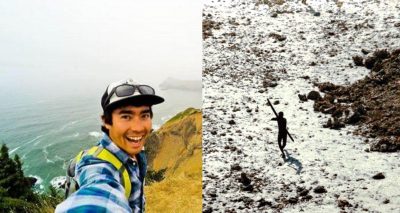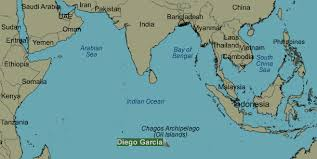Bringing God and Finding Death: A Christian Missionary on North Sentinel Island in the Bay of Bengal

Curiosity for the undiscovered last tribe, that tantalising moment when eyes are cast upon the previously unseen, remains the anthropological Holy Grail. But to do so would lead to the natural consequences that come with contact and invasion: the foisting of an alien divinity upon others, most probably a monotheistic Sky God, whose grammatically challenged invocations are found in a holy text. Then would come the introduction of terminal disease, the mod cons, and ultimate extinction.
For the inhabitants of North Sentinel Island, part of India’s Andaman and Nicobar islands, isolation is both conservation and vulnerability. Encounters have been recorded, though these are unflattering for modern audiences reared on sanitised words. Marco Polo wrote, around 1296, of “a very large and wealthy island called Angaman” populated by men with “heads like dogs, and teeth and eyes also like dogs. I assure you that, as regards their heads, they all look like big mastiffs”. An inventive man, was the cheeky Dalmatian.
 Sir Arthur Conan Doyle’s The Sign of Four adds to the exotica of terror, with his Dr. Watson describing a villainous Andaman Islander sporting “murderous darts” and a “face [that] was enough to give a man a sleepless night.” He had “features so deeply marked with all bestiality and cruelty.” Never to be outdone, Sherlock Holmes, plucking a volume from his shelf, finds it describing a people, after Polo’s fashion, as “naturally hideous having large misshapen heads, small, fierce eyes, and distorted features.”
Sir Arthur Conan Doyle’s The Sign of Four adds to the exotica of terror, with his Dr. Watson describing a villainous Andaman Islander sporting “murderous darts” and a “face [that] was enough to give a man a sleepless night.” He had “features so deeply marked with all bestiality and cruelty.” Never to be outdone, Sherlock Holmes, plucking a volume from his shelf, finds it describing a people, after Polo’s fashion, as “naturally hideous having large misshapen heads, small, fierce eyes, and distorted features.”
Contact with the shy locals has proven fatal, though not always. In 1867, the passengers and crew of the wrecked Indian merchantman, the Nineveh, managed to survive attacks launched by, in the description of the captain’s report, “perfectly naked” men “with short hair and red painted noses… making sounds like pa on ough”.
A more recent display was at hand in August 1981, when the crew of the Panamanian-registered freighter, the Primrose, ran aground on a reef near North Sentinel after enduring heavy weather. Initial relief turned to terror. “Wild men, estimate more than 50, carrying various homemade weapons are making two or three wooden boats,” came the wired distress call from the captain, sent to the Regent Shipping Company’s offices in Hong Kong. “Worrying they will board us at sunset. All crew members’ lives not guaranteed.” The crew, armed with piping, axes and a flare gun – kept up a week long vigil till the arrival of both a tugboat and helicopter, courtesy of the Indian Navy.
In 2006, two apparently intoxicated Indian fishermen, Sunder Raj and Pandit Tiwari, were less fortunate in their poaching ventures, meeting their gruesome end after straying into the island’s proximity. Efforts by an Indian Coast Guard helicopter to recover the bodies was foiled by Sentinelese armed with bows and arrows.
The dangers were just as grave to the tribes ringed by the Andaman Sea. Colonialism, fuelled by the penal experiments pioneered by such vessels as the East Indian Company steamer Pluto, put pay to the culture of the Great Andamanese people, their people perishing to measles and syphilis.
A British naval officer, Maurice Vidal Portman, gave the world a highly conventional demonstration about how a new civilisation treats another: You kidnap their members, and observe them in captivity. Essentially incarcerating a select few, adults and offspring, Portman witnessed the adults ail and die. The orphaned children were returned to their abode. He did, at least, have the grim sense to observe in 1899 that,
“We cannot be said to have done anything more than increase their general terror of, and hostility to, all comers.”
Efforts to engage the islanders, propelled by insatiable curiosity, have never stopped. As late as 1975, the efforts by a documentary maker for National Geographic attempting to cover North Sentinel resulted in an arrow in the leg. In 2000, historian Adam Goodheart got the bug and ventured to North Sentinel, observing, from a safe distance along the shoreline, figures “facing us, and one of them was holding something long and thin – a spear? A bow? Impossible to tell.” The title of his contribution to The American Scholar was predictably inelegant and suggestive: “The Last Island of the Savages.”
The Indian government has banned travel to the island on penalty, a situation that has had the unintended effect of turning the surviving individuals in question into residents of an open air, inaccessible zoo. That zoo, a natural entrapment of hunter-gatherers, is written about as an existence of finite contingency, a curiosity that must surely meet its demographic, if not cultural reckoning. Sita Venkateswar, writing in The Scientific American, asks how long this “window to our past” will remain open.
A degree of added exoticism that accompanies such moves has also been accentuated by a 2017 ban on the taking of photographs or the making of videos of the protected Jarawa and other tribal communities of the Andaman and Nicobar Islands, including the Andamanese, Onges, Sentinelese Nicobarese and Shom Pens. As the National Commission for Scheduled Tribes (NCST) outlined in a statement last year, “removal of these objectionable video films from YouTube and initiate action on those who uploaded these video clips on social media platforms” was an imperative. Penalties of up to three years imprisonment apply.
John Allen Chau fell for the temptation, wishing to bring his own variant of the Sky God to this population numbering anywhere between 50 to 150 people. Had he been a more cognisant student of the island’s history, he would been aware that those bringing gifts, however well intentioned, are bound to be met by more arrows than sympathy. The crew of anthropologists, armed police and a photographer for National Geographic met just that in 1974 despite, wishing to, according to one of the scientists, “win the natives’ friendship by friendly gestures and plenty of gifts.” History is replete with instances where the gift-giving foreigner ends up doing far more than simply being generous; disease, alcohol, land theft tend to follow, almost always with the god of Christianity thrown in. Chau’s own gifts were more modest: a small soccer ball, fishing line, a pair of scissors.
On North Sentinel Island, the hopeful Chau envisaged, according to his notes, a “kingdom of Jesus” springing up in the community, a proselytising language all too reminiscent of those missionary forebears described by Edward Andrews in 2010 as “ideological shock troops for colonial invasion whose zealotry blinded them”. All Nations, an international Christian missionary group, merely confirmed this sentiment: “John was a gracious and sensitive ambassador of Jesus Christ.”
An unimpressed Dependra Pathak, director general of police of the Andaman and Nicobar islands, steadfastly denied any tourist label for the intrepidly foolish Chau, feeling that he had gotten there under false pretences. (God bothering types can be economical with motives when required.)
“We refuse to call him a tourist. Yes, he came on a tourist visa but he came with a specific purpose to preach on a prohibited island.”
The 26 year old from Washington State became a twenty-first century victim of an old curiosity. He had done so before, some four times, always with the assistance of local fishermen who gave him unheeded warnings. Accounts of these visits, both in terms of frequency and how he got to the island, vary: he is said to have also ventured to North Sentinel by canoe from November 15 on a few occasions, having made contact with the inhabitants. On those occasions, he returned safely, though he was attacked.
Chau showed the quizzical nature of the confused faithful. Why would these tribesmen be aggressive? He, as any truly paternalistic invader, had “been so nice to them”. His faith was sufficiently strong to excuse any death he might suffer. “Do not blame the natives if I am killed.” And killed he was, his dragged body seen on the beach on November 17 by the fishermen who warned him. With a globe now choked by the mantra of mandatory interconnectedness, being an untouched island community is not only a heresy but a crime for the curious. “They are not wanting anything from you,” explained the Indian anthropologist T.N. Pandit, who had made visits to North Sentinel between 1967 and 1991. “They suspect that we have no good intentions.” How logically prescient.
*
Note to readers: please click the share buttons above. Forward this article to your email lists. Crosspost on your blog site, internet forums. etc.
Dr. Binoy Kampmark was a Commonwealth Scholar at Selwyn College, Cambridge. He lectures at RMIT University, Melbourne. He is a frequent contributor to Global Research and Asia-Pacific Research. Email: [email protected]

